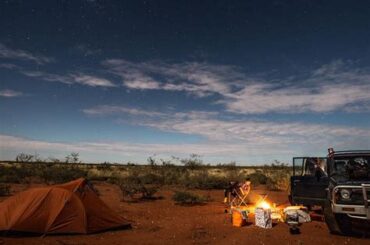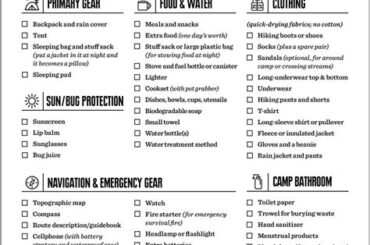Shelter: Choosing the Perfect Tent
When it comes to camping and outdoor adventures, having a reliable and comfortable shelter is crucial. Choosing the perfect tent can make or break your camping experience. There are several factors to consider when selecting a tent, including size, weight, durability, and weather resistance. By taking the time to research and evaluate your options, you can ensure that you find a tent that meets your needs and provides a cozy and protective home away from home.
Firstly, size is an important factor to consider when choosing a tent. You want to make sure that the tent can comfortably accommodate you and your camping companions. The size of the tent is typically measured by the number of people it can sleep, such as a two-person or four-person tent. Keep in mind that a tent’s size rating is based on people sleeping side by side with no extra space for gear. If you prefer to have some extra room inside the tent, consider sizing up. It’s also a good idea to check the tent’s dimensions to see if it offers enough headroom for you to sit up comfortably.
Next, weight is a crucial factor, especially if you plan on backpacking or carrying your tent over long distances. Lightweight tents are designed to minimize the weight without sacrificing too much on comfort and durability. They are typically made of lightweight materials such as silnylon and have lightweight poles. However, keep in mind that ultralight tents may be more expensive compared to heavier options. Consider your camping style and the terrain you’ll be venturing into before making a decision.
Another important factor to consider is the durability of the tent. You want to invest in a tent that can withstand various outdoor conditions and provide long-lasting use. Look for tents that are made of high-quality materials and have sturdy construction. Reinforced stitching, strong zippers, and durable pole materials like aluminum or fiberglass are all indicators of a well-built tent. It’s also a good idea to read reviews and ratings from other campers to gauge a tent’s durability before making a purchase.
Sleeping Gear: Ensuring a Restful Night’s Sleep
When it comes to camping or backpacking, one of the most important factors for a successful trip is getting a good night’s sleep. And to achieve that, having the right sleeping gear is crucial. Whether you’re a seasoned outdoors enthusiast or a beginner, having the right equipment can make all the difference. In this blog post, we’ll explore the essential sleeping gear you need to ensure a restful night’s sleep in the great outdoors.
First and foremost, a reliable sleeping bag is an absolute must-have. It provides insulation and warmth, protecting you from the cold ground and chilly nighttime temperatures. Look for a sleeping bag that is suitable for the climate you will be camping in, and consider the temperature rating to ensure you stay comfortable throughout the night. Additionally, opt for a sleeping bag that is lightweight and compact, making it easy to carry and pack.
Next on the list is a sleeping pad or mattress. While a sleeping bag provides insulation from the ground, a sleeping pad or mattress adds an extra layer of comfort. It not only cushions your body but also provides insulation from the cold ground. There are various types of sleeping pads to choose from, including self-inflating pads, foam pads, and air mattresses. Consider factors such as comfort, durability, insulation, and packability when selecting the right sleeping pad for your needs.
Lastly, don’t forget about a quality pillow. A good pillow can significantly improve your sleeping experience by providing support and comfort for your head and neck. There are camping-specific pillows available that are designed to be lightweight and packable. Look for a pillow that offers adjustable firmness and support to cater to your personal preferences. Some pillows even come with built-in inflation systems for easy setup.
In summary, having the right sleeping gear is essential for ensuring a restful night’s sleep while camping or backpacking. A good sleeping bag, a comfortable sleeping pad, and a quality pillow are the key elements to consider. Remember to choose gear that is suitable for the climate, lightweight, and easy to pack. With the right sleeping gear, you’ll be able to recharge and wake up refreshed, ready to take on the adventures of the day!
- Choose a sleeping bag suitable for the climate
- Consider the temperature rating
- Opt for a lightweight and compact design
- Select a comfortable and durable sleeping pad
- Look for insulation and packability
- Don’t forget a quality camping pillow
- Ensure it offers adjustable firmness and support
- Consider pillows with built-in inflation systems
| Sleeping gear essentials: | Factors to consider: |
|---|---|
| Sleeping bag | Suitable for climate, temperature rating, lightweight, compact |
| Sleeping pad or mattress | Comfort, durability, insulation, packability |
| Camping pillow | Adjustable firmness and support, lightweight, packability |
Cooking Essentials: Making Delicious Campfire Meals
Cooking is an essential part of any camping trip. When you’re out in the wilderness, surrounded by nature, there’s nothing quite like gathering around a campfire and enjoying a delicious, hot meal. However, cooking in the great outdoors can present its own unique set of challenges. In order to make the most of your camping cooking experience, it’s important to have the right cooking essentials on hand. From campfire cooking equipment to pantry staples, here are some tips and tricks for making delicious campfire meals.
First and foremost, you’ll need a reliable campfire cooking setup. A sturdy and portable camping stove is a must-have for any outdoor cooking adventure. Look for one that is compact, lightweight, and easy to set up. Additionally, investing in a set of camping cookware that is specifically designed for outdoor use can make a world of difference. These typically include a pot, a pan, and utensils that are durable and heat-resistant. Quality cooking essentials will ensure that your meals are cooked evenly and efficiently.
Another important aspect of making delicious campfire meals is stocking up on pantry staples. It’s a good idea to plan your meals in advance and make a list of essential ingredients. Some versatile options include canned goods such as beans or vegetables, as well as pasta, rice, and spices. These items are lightweight, easy to store, and have a long shelf life. Don’t forget to pack some reusable storage containers to keep your ingredients fresh and organized.
Lastly, don’t forget about the cooking techniques you can use to enhance the flavor of your campfire meals. Grilling directly over the fire is a classic method that adds a smoky and delicious taste to your food. You can also try using foil packets to cook meat, fish, or vegetables. This method seals in the flavors and juices, resulting in tender and flavorful dishes. Another option is using a Dutch oven, which allows you to create hearty stews, casseroles, and even desserts. Experiment with different techniques and get creative with your campfire cooking.
- Invest in a reliable campfire cooking setup, including a camping stove and cookware.
- Stock up on pantry staples such as canned goods, pasta, rice, and spices.
- Utilize different cooking techniques such as grilling, foil packets, and Dutch oven cooking.
| Pros: | Delicious and flavorful meals | Enjoyment of cooking in nature |
| Cons: | Requires additional equipment and planning | Potential limitations based on campfire regulations |
Cooking essentials are the key to making delicious campfire meals. With the right equipment, pantry staples, and cooking techniques, you can elevate your outdoor cooking experience to a whole new level. So, the next time you embark on a camping trip, don’t forget to pack these essentials and get ready to enjoy some mouthwatering campfire cuisine!
Outdoor Clothing: Dressing for Comfort and Protection
When it comes to outdoor adventures, one of the most important factors to consider is the clothing you choose to wear. Dressing appropriately for the weather conditions and activities you will be participating in is crucial for both comfort and protection. Whether you are hiking, camping, or engaging in any other outdoor activity, having the right outdoor clothing can make all the difference.
First and foremost, it is essential to prioritize comfort when selecting your outdoor clothing. Opting for clothes made from breathable and moisture-wicking materials will help keep you cool and dry, even during intense physical activities. Look for fabrics such as polyester, nylon, or merino wool, which are known for their moisture-wicking properties. Additionally, consider choosing clothing with stretch or flexibility to ensure ease of movement while hiking or engaging in other active pursuits.
Another crucial aspect to consider when choosing outdoor clothing is protection from the elements. Depending on the season and location, you may need to shield yourself from rain, wind, or even extreme temperatures. Investing in a high-quality waterproof and windproof jacket is a wise decision to stay dry and warm during unexpected weather changes. Similarly, don’t forget to wear a hat and sunglasses for protection against harmful UV rays. Additionally, layering your clothing can provide insulation and allow you to adjust your body temperature as needed.
Safety Equipment: Staying Prepared in the Wilderness
When venturing into the wilderness, safety should always be a top priority. Whether you’re backpacking through remote trails or camping in a secluded area, having the right safety equipment can make all the difference in an emergency situation. It is crucial to be prepared for the unexpected and to have the necessary tools and supplies to navigate through any potential dangers that may arise. In this blog post, we will explore the essential safety equipment that every outdoor enthusiast should have to stay prepared in the wilderness.
List of Essential Safety Equipment:
- First Aid Kit: A well-stocked first aid kit is a must-have for any outdoor adventure. It should include bandages, antiseptic wipes, adhesive tape, pain relievers, and any necessary prescription medications.
- Navigation Tools: Getting lost can be a terrifying experience, so it’s essential to have reliable navigation tools like a map, compass, or GPS device. Familiarize yourself with these tools before your trip and know how to use them properly.
- Emergency Shelter: In case you find yourself stranded or unable to reach your intended camping site, having an emergency shelter such as a lightweight tent or a bivvy bag can provide protection from the elements.
- Fire-starting Tools: Fire can be a lifesaver in the wilderness, providing warmth, cooking capability, and a means to signal for help. Carry waterproof matches, a lighter, and fire starters to ensure you can start a fire even in wet conditions.
- Multi-tool: A versatile multi-tool with a knife, pliers, screwdriver, and other essential tools can prove invaluable in a variety of situations, from repairing gear to preparing food.
- Headlamp: A headlamp provides hands-free illumination, making it easier to navigate at night or in low-light conditions. Ensure you have spare batteries to prolong its use.
Table of Additional Safety Equipment:
| Equipment | Purpose |
|---|---|
| Whistle | To attract attention or signal for help |
| Personal Locator Beacon (PLB) | A device that transmits a distress signal to emergency responders |
| Emergency Blanket | To provide warmth and insulation |
| Water Purification System | To safely purify water from natural sources |
| Snake Bite Kit | To treat snake or insect bites |
| Extra Food and Water | Additional supplies in case of unexpected delays or emergencies |
Ensuring your safety in the wilderness goes beyond merely having the right equipment. It also involves informing someone about your planned itinerary and estimated return time. Additionally, considering the weather conditions and researching the area you will be exploring can help you better prepare for potential hazards.
In conclusion, staying prepared in the wilderness requires having the necessary safety equipment to handle unexpected situations. By carrying a well-stocked first aid kit, navigation tools, emergency shelter, fire-starting tools, a multi-tool, and a headlamp, you are better equipped to handle emergencies or unforeseen circumstances. Remember, being proactive and using preventative measures can significantly reduce the risks associated with outdoor adventures. Stay safe and enjoy your time in the great outdoors!
Frequently Asked Questions
Question 1: What factors should I consider when choosing a tent?
When choosing a tent, it’s important to consider factors such as the size, weight, and capacity of the tent, as well as the season and weather conditions you’ll be camping in. Additionally, think about the ease of setup, durability, and the presence of features like rainfly and vestibules.
Question 2: How can I ensure a restful night’s sleep while camping?
To ensure a restful night’s sleep while camping, invest in a comfortable sleeping bag and a good quality sleeping pad. Look for insulation and padding that suits the temperature and terrain you’ll be camping in. Additionally, consider using earplugs to block out noise and a sleep mask to shield your eyes from sunlight in the morning.
Question 3: What cooking essentials should I bring for campfire meals?
When it comes to cooking campfire meals, it’s important to bring essentials such as a camping stove or a portable grill, cooking utensils, pots and pans, and food storage containers. Don’t forget to pack basic seasoning, oil, and cleaning supplies to ensure a delicious and hassle-free cooking experience.
Question 4: How should I dress for comfort and protection in outdoor clothing?
When dressing for the outdoors, prioritize comfort and protection. Wear moisture-wicking and breathable fabrics that are suitable for the weather conditions. Layer your clothing for adjustable insulation, and don’t forget to wear a hat and sunglasses for sun protection. Additionally, choose sturdy and comfortable footwear that suits the terrain.
Question 5: What safety equipment should I bring for wilderness adventures?
For wilderness adventures, it’s crucial to bring necessary safety equipment. This includes a first aid kit, a navigation system (map and compass or GPS), a whistle for signaling, a headlamp or flashlight, a multi-tool, and a fire starter. Depending on your outdoor activities, you may also need specialized safety gear like a climbing helmet or a bear canister.
Question 6: How can I stay prepared for emergencies in the wilderness?
To stay prepared for emergencies in the wilderness, make sure to inform someone about your plans and expected return time. Carry essentials like extra food, water, and clothing in case of unexpected delays. Familiarize yourself with basic wilderness survival skills and know how to signal for help if needed.
Question 7: What are some tips for a successful camping trip?
Some tips for a successful camping trip include conducting thorough research about your camping destination, planning and packing ahead of time, practicing Leave No Trace principles, and being flexible and adaptable to unexpected changes in weather or circumstances. It’s also important to respect wildlife, follow campground rules, and leave the campsite as clean as you found it.





